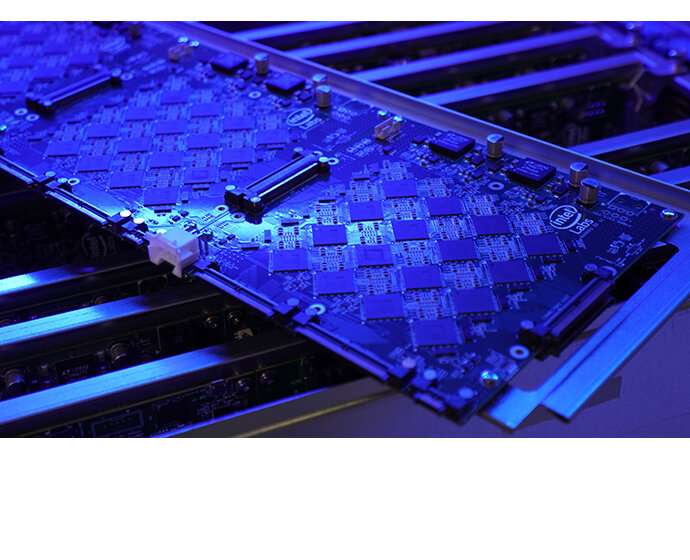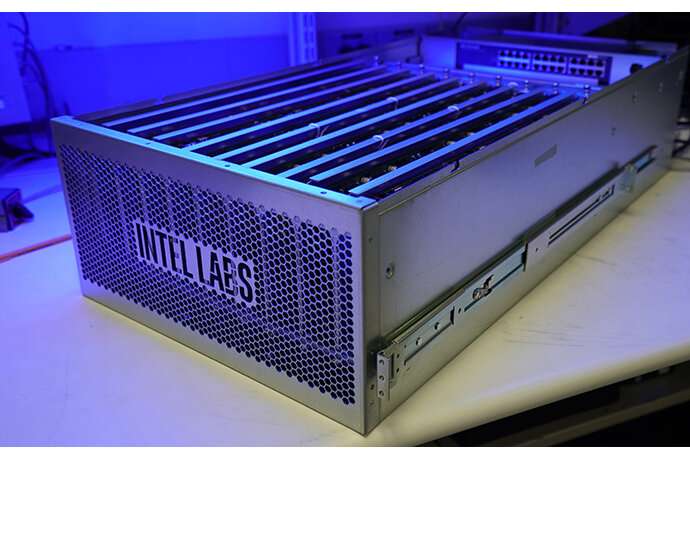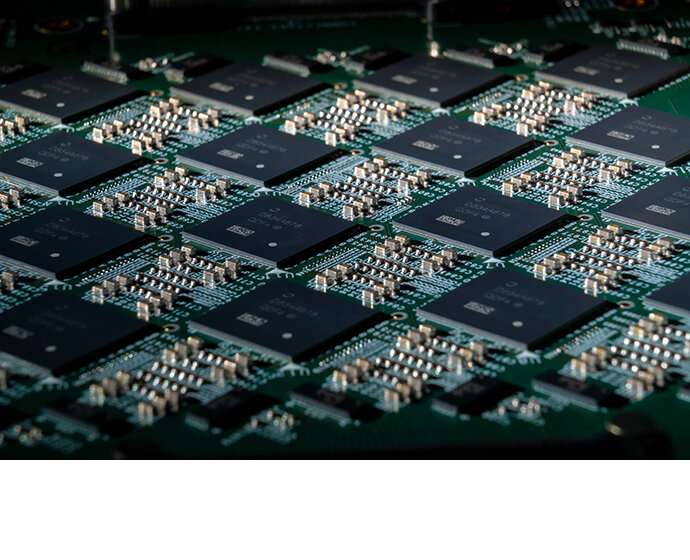Intel scales neuromorphic research system to 100 million neurons

Today, Intel announced the readiness of Pohoiki Springs, its latest and most powerful neuromorphic research system providing the computational capacity of 100 million neurons. The cloud-based system will be made available to members of the Intel Neuromorphic Research Community (INRC), extending their neuromorphic work to solve larger, more complex problems.
"Pohoiki Springs scales up our Loihi neuromorphic research chip by more than 750 times, while operating at a power level of under 500 watts. The system enables our research partners to explore ways to accelerate workloads that run slowly today on conventional architectures, including high-performance computing (HPC) systems," says Mike Davies, director of Intel's Neuromorphic Computing Lab.
Pohoiki Springs is a data center rack-mounted system and is Intel's largest neuromorphic computing system developed to date. It integrates 768 Loihi neuromorphic research chips inside a chassis the size of five standard servers.
Loihi processors take inspiration from the human brain. Like the brain, Loihi can process certain demanding workloads up to 1,000 times faster and 10,000 times more efficiently than conventional processors. Pohoiki Springs is the next step in scaling this architecture to assess its potential to solve not just artificial intelligence (AI) problems, but a wide range of computationally difficult problems. Intel researchers believe the extreme parallelism and asynchronous signaling of neuromorphic systems may provide significant performance gains at dramatically reduced power levels compared with the most advanced conventional computers available today.
In the natural world even some of the smallest living organisms can solve remarkably hard computational problems. Many insects, for example, can visually track objects and navigate and avoid obstacles in real time, despite having brains with well under 1 million neurons.

Similarly, Intel's smallest neuromorphic system, Kapoho Bay, comprises two Loihi chips with 262,000 neurons and supports a variety of real-time edge workloads. Intel and INRC researchers have demonstrated the ability for Loihi to recognize gestures in real time, read braille using novel artificial skin, orient direction using learned visual landmarks and learn new odor patterns—all while consuming tens of milliwatts of power. These small-scale examples have so far shown excellent scalability, with larger problems running faster and more efficiently on Loihi compared with conventional solutions. This mirrors the scalability of brains found in nature, from insects to human brains.
With 100 million neurons, Pohoiki Springs increases Loihi's neural capacity to the size of a small mammal brain, a major step on the path to supporting much larger and more sophisticated neuromorphic workloads. The system lays the foundation for an autonomous, connected future, which will require new approaches to real-time, dynamic data processing.
Intel's neuromorphic systems, such as Pohoiki Springs, are still in the research phase and are not intended to replace conventional computing systems. Instead, they provide a tool for researchers to develop and characterize new neuro-inspired algorithms for real-time processing, problem solving, adaptation and learning.
INRC members will access and build applications on Pohoiki Springs via the cloud using Intel's Nx SDK and community-contributed software components.
Examples of promising, highly scalable algorithms being developed for Loihi include:
- Constraint satisfaction: Constraint satisfaction problems are present everywhere in the real world, from the game of sudoku to airline scheduling, to package delivery planning. They require evaluating a large number of potential solutions to identify the one or few that satisfy specific constraints. Loihi can accelerate such problems by exploring many different solutions in parallel at high speed.
- Searching graphs and patterns: Every day, people search graph-based data structures to find optimal paths and closely matching patterns, for example to obtain driving directions or to recognize faces. Loihi has shown the ability to rapidly identify the shortest paths in graphs and perform approximate image searches.
- Optimization problems: Neuromorphic architectures can be programmed so that their dynamic behavior over time mathematically optimizes specific objectives. This behavior may be applied to solve real-world optimization problems, such as maximizing the bandwidth of a wireless communication channel or allocating a stock portfolio to minimize risk at a target rate of return.

About Neuromorphic Computing
Traditional general-purpose processors, like CPUs and GPUs, are particularly skilled at tasks that are difficult for humans, such as highly precise mathematical calculations. But the role and applications of technology are expanding. From automation to AI and beyond, there is a rising need for computers to operate more like humans, processing unstructured and noisy data in real time, while adapting to change. This challenge motivates new and specialized architectures.
Neuromorphic computing is a complete rethinking of computer architecture from the bottom up. The goal is to apply the latest insights from neuroscience to create chips that function less like traditional computers and more like the human brain. Neuromorphic systems replicate the way neurons are organized, communicate and learn at the hardware level. Intel sees Loihi and future neuromorphic processors defining a new model of programmable computing to serve the world's rising demand for pervasive, intelligent devices.



















